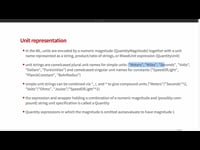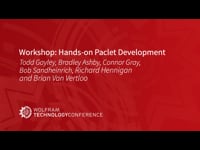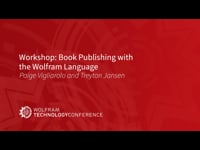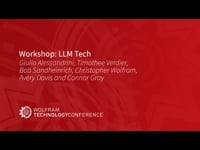This page requires that JavaScript be enabled in your browser.
Learn how »
A Computational Study of the Internal Structure of Historical Papers: Leonardo da Vinci's Notebooks
William Sethares
Using light-based image analysis, we describe a computational approach to minimize surface marks and writing in original documents. This facilitates accurate matching of watermarks and chain/wire lines, making it possible to identify and suggest connections among da Vinci’s papers made from the same papermaking mold—meaningful evidence of origin, sequence and date.
Thanks for your feedback.
Channels: Technology Conference
1311 videos match your search.
 |
Eric Weisstein & Michael Trott |
 |
Riccardo Di Virgilio Come to a hands-on session with the developers of the ExternalEvaluate framework. Bring your questions, suggestions, ideas and problems while working with external languages. Don't have a specific question? Then ... |
 |
Todd Gayley,Bob Sandheinrich,Bradley Ashby,Connor Gray ,Richard Hennigan , Brian Van Vertloo |
 |
Jordan Hasler Modern learning spaces combine computation, visualization and concept exploration. Wolfram|Alpha Notebook Edition facilitates all three, teaching Wolfram Language along the way. This talk demonstrates the breadth and depth of ... |
 |
Paige Vigliarolo and Treyton Jansen Learn about book publishing using Wolfram Language. We'll explain our various programs for supporting authors working to publish both with Wolfram Media and with other publishers. A brief demonstration of ... |
 |
Mads (Mohammad) Bahrami, John Mcnally and Yi Yin |
 |
Rory Foulger Our programs push students to deeply engage in their subject area while becoming resilient and self-motivated computational thinkers. Educators, parents, and students are welcome to come and explore the intentional ... |
 |
Giulio Alessandrini, Timothee Verdier, Bob Sandheinrich , Christopher Wolfram, Avery Davis and Connor Gray |
 |
Giulio Alessandrini, Jesse Galef |
 |
Carlo Barbieri The objective of this workshop is getting you started with the main concepts of working with Relational Databases through the Entity framework in the Wolfram Language. |
 |
Bart ter Haar Romeny StyleGAN (Style Generative Adversarial Network) is a type of generative model capable of generating realistic images. It is not trivial to explain what happens inside. In this computational essay, I ... |